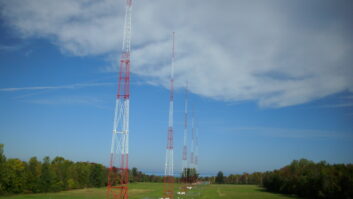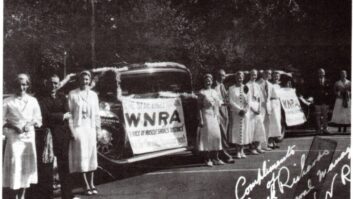‘Sign Off’: A Good Idea
Cheers to Paul Thurst for his commentary “Sign Off, and Save Some Money” (Aug. 12). It shows an enlightened attitude toward re-embracing the practice of years ago: stations actually signing off, such as from midnight to 6 a.m.
A few stations still do. The revered KNXR 97.5 Rochester, Minn., for example, which takes great care with its audio, has resisted the notion of consolidation in the local marketplace and has not embraced IBOC, has for years signed off at 1 a.m. local time.
Not only is there a savings in electrical consumption, signing off evidences stewardship of our precious resources in showing the public and other businesses a concern over energy consumption. It also psychologically shows to the listener that the hours such a station is on the air are usually hours when there is a live person on duty, and a facility where time checks and weather forecasts with current temperatures can be believed.
Too, signing off helps free up a frequency for the casual listener or the DXer, who can then enjoy the hobby of trying for distant stations on or adjacent to the channel thus cleared. I know many engineers and even station owners have come into the field from having experienced it first as DXers, or even ham radio operators.
Once I toyed with the idea of urging stations in a market to rotate the nights they stayed on the air during the wee hours. A country station might be on Monday night (Tuesday morning), a rock station Tuesday night, a Christian station another night, a public station a different night. In the largest markets, perhaps one station of each format could stay on, with that station rotating with other stations having similar formats from night to night or week to week. Of course, this opens the possibility of anti-trust violations, but that’s not such a consideration with conglomerates, with one owner controlling five to seven local stations.
Yes, Paul Thurst is right that the industry could save energy and provide a more interference-free dial for listeners, at least part of the 24-hour period we call a “day.”
Bruce F. Elving
Esko, Minn.
The author publishes the “FM Atlas” and was founder of the FMedia! newsletter.
‘Sign Off’: Not for Me
The commentary by Paul Thurst of Pamal Broadcasting really struck a nerve with me.
For the sake of nighttime interference and “wasted electricity,” he wants AM stations to turn off from midnight to 6 a.m.
My radio station welcomed the 33 watts at night given to us in 1987. My electricity consumption is about $2 per night. I don’t run air conditioning at night. Our signal is heard well, around 7 miles, as it is free of power lines, fluorescent lights and other objectionable sources. We are also the only station in a community of 12,000.
There are no radio stations operating on our frequency in Wisconsin, going north to the North Pole. My tower lights likely use more electricity than my transmitter does.
If Paul really wants to save electricity alone, he should go to the all-night gas station down the road and ask them to kill some of their sodium vapor lights burning all night. In fact, in my community, two city-owned spotlights shine at the local church steeple; those burn more CO2, SO2 and NOx than our station does. And don’t get me started on how many floodlights are shining on the American flag in our town.
It’s a “quality of life” issue. Do you really want to give up overnight radio broadcasting in small and medium markets?
If the amount of nighttime interference on AM that Paul Thurst hears all night is truly objectionable, he should be advocating that all crystal oscillators in AM transmitters be converted to a GPS-based “frequency synch” that would get everyone zero-beating at the exact frequency they’re licensed for. Somebody dropped the ball when this was proposed in Radio World a few years ago.
As to his comments about Jim Bohannon, Larry King or others, I frankly find overnight programming to be unique and excellent, including George Noory, Bruce Williams and even the “Wall Street Journal” reports designed for the overnight hours.
Finally, our transmitter site is 10 miles from two nuclear plants with three operating reactors. I can’t see how a radio station could turn their back on 25 percent of their operating schedule. Bad weather and other emergencies don’t take a vacation during the overnight hours.
Thank you for allowing me to advocate for full-service broadcasting, especially on the AM band.
Mark Heller
President/General Manager
WGBW(AM)
Two Rivers, Wis.
Pointed Digital Questions
I have to give you credit that you ran Bob Savage’s article on IBOC (“How Do I Know I’m Winning the Argument?” RW Engineering Extra, Aug. 19).
He posed some very pointed and significant questions. Then it becomes like the difference between Fox and NBC and the Obama administration. One’s in the tank and the other raises valid questions.
Sure would be great to see the “radio trades” ask and answer those pointed questions. The Sept. 9 issue [of RW] seems to be a propaganda piece for iBiquity.
Jim Jenkins
Owner/General Manager
WAGS Radio
Bishopville, S.C.












